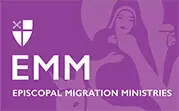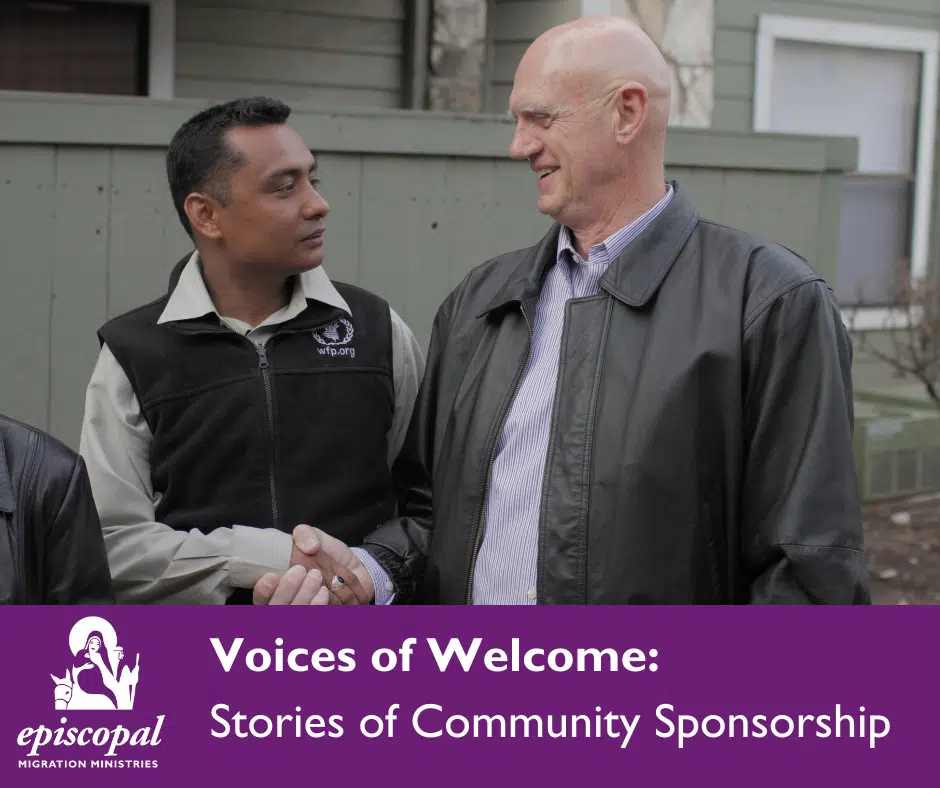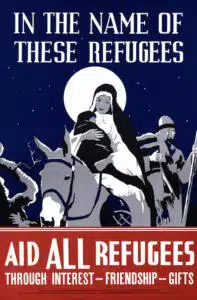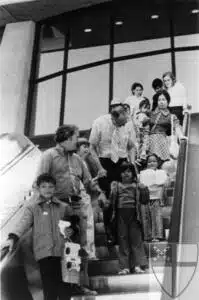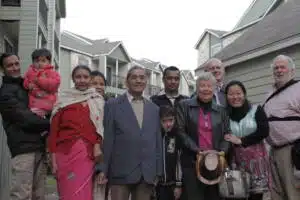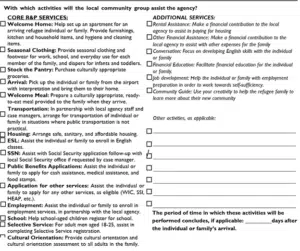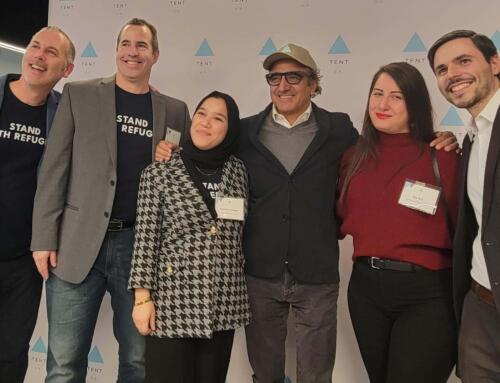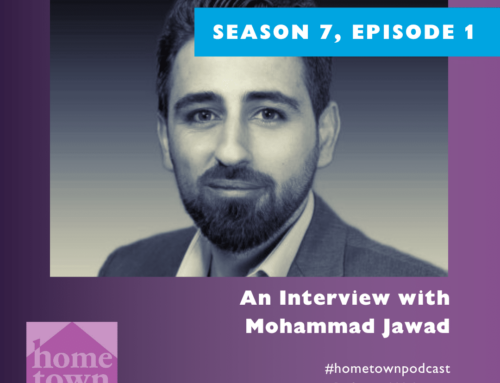Our “Stories of Welcome” series began with an exploration of Remote Placement Community Partners (RPCPs). We continue with an “explainer” on community sponsorship.
The most common way for people to engage in the work of welcoming refugees is often called “community sponsorship.” This refers to a partnership that is based on an explicit agreement between a resettlement organization and a community group, regarding which “core services” each entity will provide or ensure to specific refugees under the “Reception and Placement” program. In other words, community sponsors are groups of volunteers who work with the staff of a non-profit organization to help refugees settle into their new home and community, typically during their first 90 days in the U.S.
The groups that serve as community sponsors vary, but in the U.S., they are often faith-based groups, for historical and other reasons. The call to “welcome the stranger” has deep roots in all Abrahamic faiths. Nonetheless, the ways in which hospitality and welcome are practiced have varied over time. During and after World War II, some forcibly displaced Europeans were welcomed in the U.S., while others – notably Jewish refugees fleeing persecution — were tragically turned away.
This faith-based appeal to help refugees (left) was created by the Episcopal Diocese of Southern Ohio in 1939, then led by Bishop Henry Hobson. In the 1970s, faith-based groups, including the Episcopal Church (right), were crucial partners in the reception of refugees from southeast Asia in the wake of the Vietnam War.
Even after the passage of the Refugee Act of 1980, as the federal government expanded and formalized its investment in refugee resettlement, many organizations that contracted with the government to do resettlement were faith-based, including EMM and other agencies with affiliate organizations across the country. They naturally continued to engage congregations and community groups, but there was no consistent model.

In a community sponsorship, staff of the resettlement agency handle some tasks, while the community sponsors provide in-kind and volunteer support with other aspects of resettlement, such as housing or practicing English.
Faced with a wide spectrum of practices, policy leaders at the Department of State’s Bureau of Population, Refugees and Migration (PRM) have pushed in recent years for a standardization of expectations about the role that community sponsors will play in resettlement. Thus, as it now stands, resettlement agencies and their affiliates who receive federal funding may recognize as “community sponsors” any established group that commits to providing or ensuring at least 8 of the core services required under the Reception and Placement program.
Each organization is expected to develop and sign an explicit agreement with the community sponsor, to make clear who will take responsibility for which specific services. These agreements allow community sponsors to choose the services that they will provide, while also recognizing that the professional organization (“affiliate”) is legally responsible for ensuring that all required services are provided.
This is part of the agreement that EMM’s affiliate organizations use with community sponsors:
There are definite advantages to community sponsorship for all involved: the affiliate, the community group, and the newcomers. We will learn more about these benefits and the dynamics of community sponsorship in the next installment of this series, as we turn to the story of the partnership in a North Carolina community between an established resettlement organization and local congregations who have served as community sponsors.
